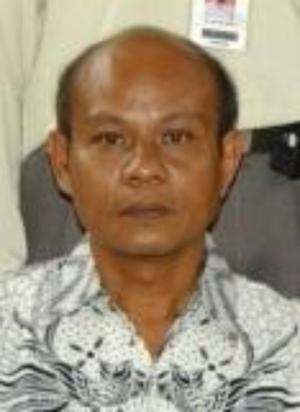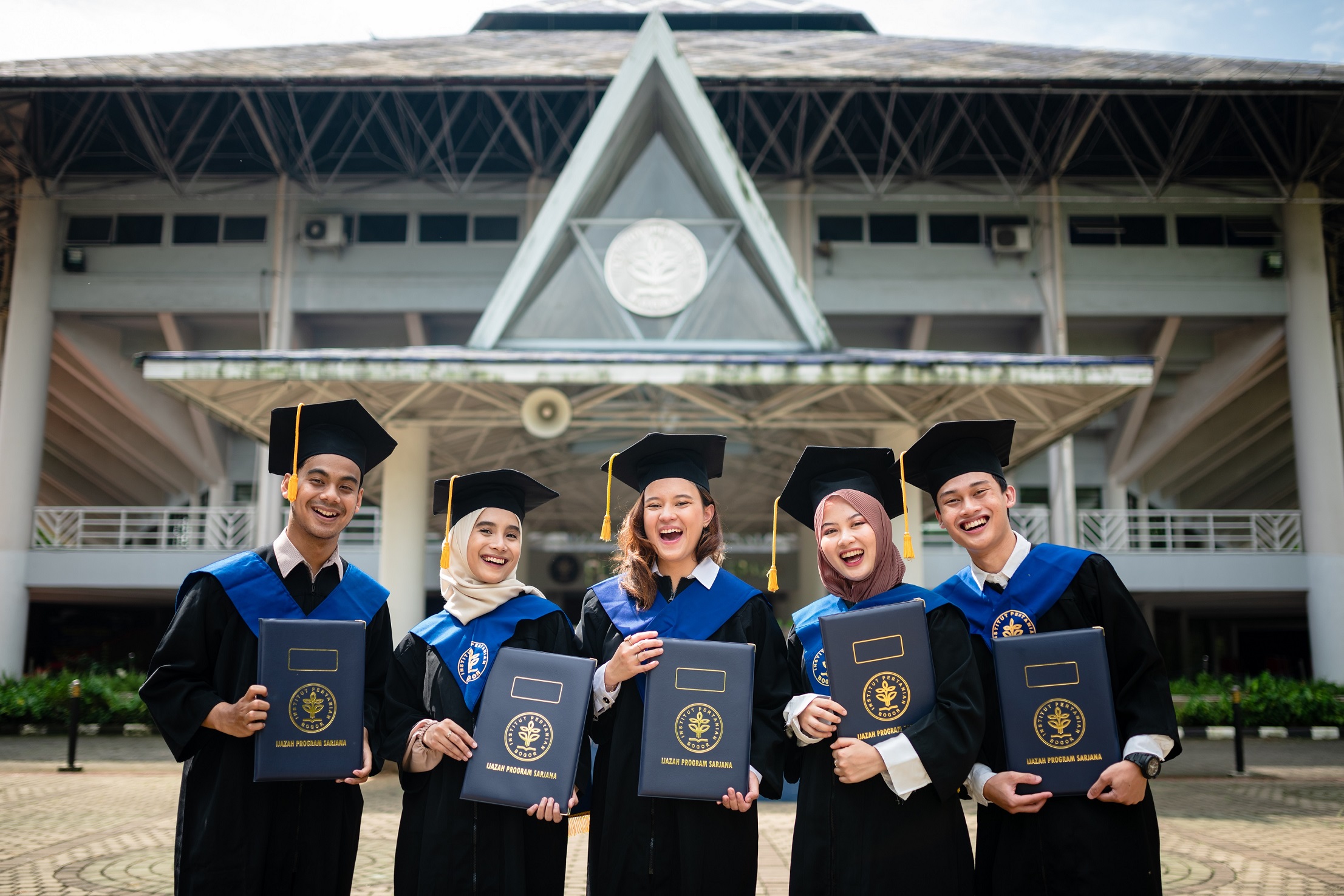The Pearl of the University Library of Bogor Agricultural University

Wednesday, 20 October 2010 was a pounding day for one of Bogor Agricultural University librarians, as that day was the announcement of the result of the Writing Competition on Library for the Indonesian Librarians (Lomba Penulisan Artikel tentang Kepustakawanan Indonesia LPAKI) for 2010 organized by the National Library of Indonesia. The competition was to benchmarks for the development of library and librarianships in Indonesia.
According to the Chairman of the Orgonizing Comittee of 125 (one hundred twenty five) entries, only 121 (one hundred twenty one) met to the criterions set by the committee. After undergone taugh assessment of the article, finally the jury decided that the article of Ir. Subagyo S. Sos, Msi, the librRIn of Bogor Agricultural University was the third winner with a total score of 380. The title of his article is "The Role of Public Library District. Brought Library Berau in Kampung ", with the abstract as follows:
Since 2007, the National Library has donated books and provided technical assistance (bimtek) to the village libraries which are organizationally run by the Provincial Library. Furthermore, the socialization or promotion on the use of public libraries to improve the reading habit of the library users have been implemented by the Public Library. With reference to that situation, as well as to respond the community needs of the Berau (Central Kalimantan) on the reading materials, then the Public Library of Berau District has initiated to the establishment of a District library. As Berau district does not recognize the village, therefore, the library established was then named Kampung Library. So far, 3 (three) Kampung Libraries have been established in the following Kampong such as Ulu Designing, Labanan Makarti and Pegat Bukur. PT Berau Coal, the mining company, as well as the United tractors, and Non-goverment Organizations (NGOs) with its social responsibility (Corporate Social Responsibility-CSR) played important roles on the establsihment of those kampung libraries. Immediately, when the new Kampoung Library was established, all the 8 (eight) related library aspects (institutional, collections, facilities and infrastructure, human resources, management, services, bu dgets and librarians) have to be taken into consideration for the kampoung libraries.
In addition, to the writing activities, in 2009, Ir. Subagyo S. Sos, Msi, also implemented a study on visitors and circulation of books in the library of Bogor Agricultural University utilizing 2008 data. The article on "“Analisis pengunjung dan sirkulasi buku tercetak Studi kasus terhadap mahasiswa strata satu pada Perpustakaan Pusat Institut Pertanian Bogor = Analysis of visitors and circulation of books: case study of undergraduate student at Bogor Agricultural University Central Library." This article has been published in VISI PUSTAKA, Vol. 11 No. 1 April 2009, published by The National Library of Indonesia. As an abstract analysis results as follows:
The study was focused on the undergraduate students of Bogor Agricultural University for their supports for data required by the university library. The study aims to identify the information needs of students and uses of of the University library, the circulation of books and those two related elements. The descriptive method such as "Job and activity analysis" was utlized for the study. Different groups os students visit the University library with varying frequency. The largest percentage (84.05 %) of students visit the library 13 (thirteen) times a year. The largest percentage of Students from the Faculty of Animal Husbandry and Agricultural Technology. To solve the problems in connection with assigned works, to keep abreast of the developments in one’s field’, to develop and support work in progress are the most important purpose for which the students visit the library. For the Loans services, the data showed that as much as 43.65 percent of students were dynamic users with 8 (eight) loans a year. There was the tendency of decreasing of the total number group of students with loans on the “loan category” of with very low to high frequency. Reasons for the decrease probable lack of motivation, time, reading habits, to keep abreast of the current information. A title of books were circulated among various groups, and the majority are titles in Indonesian. About 28 percent of the total number of books were circulated, and were loaned to 112 (one hundred twelve) times (overnight loans) or as many as 50 times (one week loan). Each student borrows 2 (two) titles of book, but according to the data from the Faculty, each student borrows 4 (four) titles of book or 16 copies. Reasons for hte lower number of borrowing books were: 1). The physical condition of books (heavy and large); 2). Unfinished reading; 3). No time to comey; 4). Lazyness; and 5). Business hours of library services. The number of circulated library materials among the static library users were 52.68 percent. However, not all dynamic library users visit the library to borrow books, only about 33.23 percent books were circulatyed among them.
By the end of his graduate course (S2) in Communication Studies and Rural Development in Bogor Agricultural University, he successfully won Third Place in Scientific Writing Competition on Library and Librarinships in Indonesia organized by National Library of Indonesia in 2006. The title of his article was " Pendidikan Jarak Jauh Perpustakaan Berbasis Web Guna Peningkatan Kualitas Sumberdaya Manusia = Use Library Web-Based Distance Education for Human Resources Quality Improvement", with the abstract as follows:
Most libraries in Indonesia haven’t yet developed the library web-based distance education, even to say lack of development. Information technology has been available, but the need to setup the infrastructure to support the implementation process of learning both in linear communication, relational and convergent should be established. With the creation of library education modules they are expected to assist improving the quality of human resources, especially the library staff or information professionals. Similarly, the creativity of librarians may be translated into library articles or other learning materials as a means of sharing knowledge. A challenge for the libraries and librarians to assit the nation towards a more prosperous life through increased knowledge in the future.
In 2005, Ir. Subagyo S. Sos, Msi, won the Runner Up I in Scientific Writing Contest organized by the National Library of Indonesia. The title of his article was " Pemberdayaan Masyarakat Miskin Melalui Budaya Baca = Empowerment of the Poor Communities Through Reading Habits", and the abstract is presented as follows:
Poverty is not assessed based on the economic aspect only, but it could be evaluated by ownership of information. In term of the community empowerment, it will be limited to economic aspects, the empowerment of the poor communities in the cities and villages, to provide insight knowledge or develop their reading culture. Bookmobiles are expected to serve more to the poor communtieis in the cities or villages. The community empowerment programs may be implemented by the library alone, or in cooperation with (or synergized by) community organizations (NGOs). Of course, practical books are really required by the poor copmmunities in cities or villages. Sponsors will also be explored for the continuation of this community empowerment programs, so that the nation’s welfare programs will be achieved through the reading habits. (Wied).



